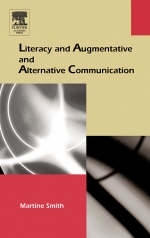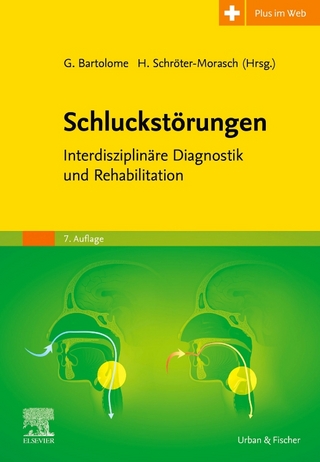
Literacy and Augmentative and Alternative Communication
Seiten
2003
Elsevier Science Publishing Co Inc (Verlag)
978-0-12-650359-3 (ISBN)
Elsevier Science Publishing Co Inc (Verlag)
978-0-12-650359-3 (ISBN)
Focuses on individuals with combined physical and communication impairments, who rely at least some of the time on aided communication. This book investigates the range of research and application issues relating to AAC and literacy, from the emergent literacy stage up through adulthood use of reading for various vocational and leisure purposes.
The new demands of this "computer and technology age" have focused international attention on literacy levels, on literacy development and literacy disorders. Governments have launched programs to reduce literacy difficulties and support functional literacy for all. In this context, the needs of individuals with severe speech and physical impairments may seem relatively small, and even unimportant. However, for this group of individuals in particular unlocking the literacy code opens up tremendous opportunities, minimizing the disabling effects of their underlying speech and motor impairments, and supporting participation in society. Ironically however, for a group for whom literacy is such an important achievement, current studies suggest that achieving functional literacy skills is particularly challenging.In order to read, individuals with severe speech impairments must access a set of written symbols and decode them to abstract meaning just as anyone else must do. They must convert underlying messages into an alternative external symbol format in order to write. In order to become expert in both of these activities, they must learn at least a certain core of knowledge about how the symbols and messages relate to each other. Just as there are many ways to skin a chicken, there are many possible ways to achieve mastery of reading and writing. Although the essence of the task may remain the same for individuals with congenital speech impairments, they may process the task, or develop task mastery in ways that are quite different from speaking children who have no additional physical impairments. "Literacy and Augmentative and Alternative Communication" focuses on individuals with combined physical and communication impairments, who rely at least some of the time on aided communication. It investigates the range of research and application issues relating to AAC and literacy (primarily reading and writing skills), from the emergent literacy stage up through adulthood use of reading for various vocational and leisure purposes. It provides a balanced view of both the whole language as well as the more analytic approaches to reading instruction necessary for the development of reading skills.
The new demands of this "computer and technology age" have focused international attention on literacy levels, on literacy development and literacy disorders. Governments have launched programs to reduce literacy difficulties and support functional literacy for all. In this context, the needs of individuals with severe speech and physical impairments may seem relatively small, and even unimportant. However, for this group of individuals in particular unlocking the literacy code opens up tremendous opportunities, minimizing the disabling effects of their underlying speech and motor impairments, and supporting participation in society. Ironically however, for a group for whom literacy is such an important achievement, current studies suggest that achieving functional literacy skills is particularly challenging.In order to read, individuals with severe speech impairments must access a set of written symbols and decode them to abstract meaning just as anyone else must do. They must convert underlying messages into an alternative external symbol format in order to write. In order to become expert in both of these activities, they must learn at least a certain core of knowledge about how the symbols and messages relate to each other. Just as there are many ways to skin a chicken, there are many possible ways to achieve mastery of reading and writing. Although the essence of the task may remain the same for individuals with congenital speech impairments, they may process the task, or develop task mastery in ways that are quite different from speaking children who have no additional physical impairments. "Literacy and Augmentative and Alternative Communication" focuses on individuals with combined physical and communication impairments, who rely at least some of the time on aided communication. It investigates the range of research and application issues relating to AAC and literacy (primarily reading and writing skills), from the emergent literacy stage up through adulthood use of reading for various vocational and leisure purposes. It provides a balanced view of both the whole language as well as the more analytic approaches to reading instruction necessary for the development of reading skills.
Introduction
The Process of Reading and Writing
Literacy Learning
Literacy and AAC
Assessment Principles
Practicalities of Assessment
Principles of Intervention
The Practicalities Intervention: Scrawling a Path to Literacy
The Role of Technology
Planning the Way Forward
| Erscheint lt. Verlag | 1.6.2003 |
|---|---|
| Reihe/Serie | Augmentative and Alternative Communications Perspectives ; 2 |
| Sprache | englisch |
| Maße | 155 x 235 mm |
| Gewicht | 581 g |
| Themenwelt | Medizin / Pharmazie ► Gesundheitsfachberufe ► Logopädie |
| ISBN-10 | 0-12-650359-1 / 0126503591 |
| ISBN-13 | 978-0-12-650359-3 / 9780126503593 |
| Zustand | Neuware |
| Haben Sie eine Frage zum Produkt? |
Mehr entdecken
aus dem Bereich
aus dem Bereich
Grundlagen, Diagnostik und Therapie
Buch | Hardcover (2023)
Urban & Fischer in Elsevier (Verlag)
70,00 €
für Sprachtherapeuten
Buch | Softcover (2021)
Urban & Fischer in Elsevier (Verlag)
41,00 €
Interdisziplinäre Diagnostik und Rehabilitation
Buch | Hardcover (2022)
Urban & Fischer in Elsevier (Verlag)
69,00 €


